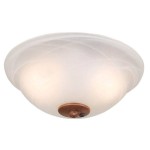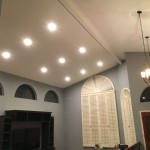DIY Ceiling Fan Light Shade: A Guide to Aesthetics and Functionality
Ceiling fan light shades not only enhance the aesthetics of your room but also play a crucial role in diffusing light and improving ventilation. Creating your own DIY light shade can be a rewarding project that adds a personal touch to your space. Whether you're a novice or an experienced DIYer, here's a guide to the essential aspects of creating a ceiling fan light shade.
Materials and Tools
The materials you choose for your light shade will depend on your desired style and the tools you have available. Some popular materials include fabric, paper, wood, and metal mesh. For basic projects, you'll need basic tools like a measuring tape, scissors, glue or fabric adhesive, and a screwdriver.
Measurements and Design
Before you start cutting and assembling, it's important to take precise measurements of your ceiling fan and the shade you want to create. Consider the diameter of the fan, the height of the shade you desire, and the overall shape and design. A well-planned design will ensure a perfect fit and a visually appealing result.
Choosing the Material
The material you select will impact the transparency, durability, and overall look of your light shade. Fabric choices range from sheer, light-diffusing fabrics like organza to heavier, denser options like velvet. Paper can be an affordable and lightweight option, but it may require additional support or coating for durability. Wood and metal mesh offer a sturdy and stylish alternative, but may require more specialized tools to work with.
Assembly Techniques
Depending on the material you choose, different assembly techniques will be required. For fabric shades, sewing, gluing, or using fabric adhesive are common methods. Paper shades can be folded, glued, or taped together. Wood shades may involve cutting, sanding, and assembling pieces using glue or nails. Metal mesh shades may require bending and shaping to achieve the desired form.
Installation
Once your light shade is complete, it's time to install it on your ceiling fan. Most ceiling fans feature a ring or hook that the shade attaches to. Ensure the shade is securely fastened, as a loose or wobbly shade can be a hazard. Follow the manufacturer's instructions for your specific ceiling fan model.
Tips for Success
- Consider the style of your room and the existing decor when selecting the design and material for your shade.
- Use high-quality materials and tools to ensure durability and longevity.
- Lay out all the materials and tools before you start to prevent any delays or confusion during assembly.
- Take your time and be patient, especially if you're working with delicate materials.
- Don't be afraid to experiment with different materials and techniques to achieve the desired effect.

Add A Drum Shade To Ceiling Fan In Minutes Thrifty Decor Diy And Organizing

Ceiling Fan Lampshades Second Time S The Charm Wildfire Interiors

Update An Old Fan On The With A Chic Shade To Makeover Your Ceiling

11 Diy Ceiling Fan Ideas How To Pretty Up A Basic Apartment Therapy

11 Diy Ceiling Fan Ideas How To Pretty Up A Basic Apartment Therapy

How To Upcycle Ceiling Fan Lights Into Candle Holders

13 Ways To Upgrade Your Boring Ceiling Fan On A Budget Hometalk

Making A Ceiling Light With Diffuser From Lamp Shade Young House Love

Diy Light Kit Inspiration How To S Bean In Love

Addressing The Ceiling Fan Light Crazy Wonderful
Related Posts








